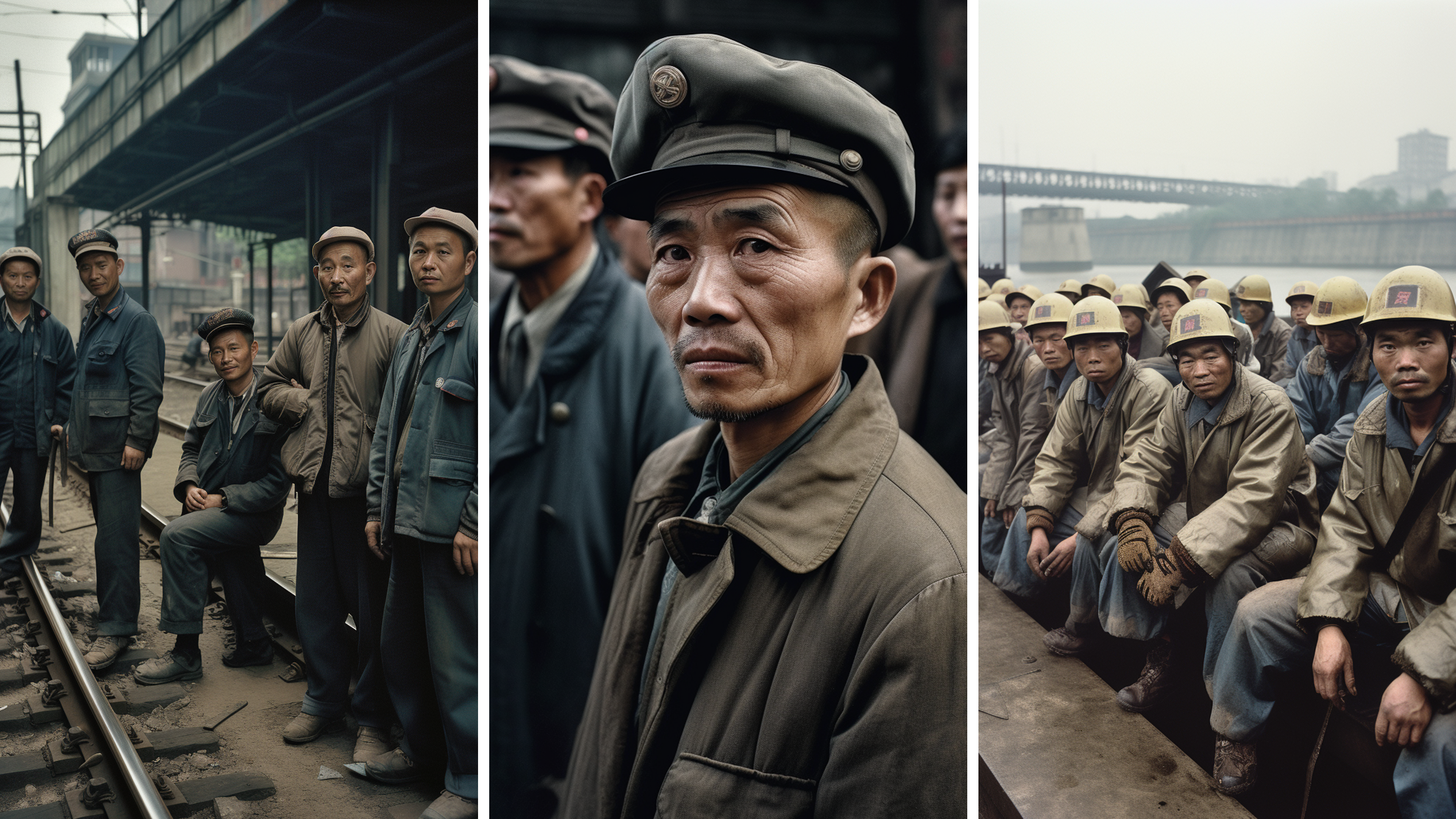If you saw these images pop up on your timeline, would you be able to tell if they were real photographs of the southwestern city of Chongqing in the 1990s?

ZHANG HAIJUN VIA MIDJOURNEY
In fact, none of them are real. Zhang Haijun, a street photographer in Chongqing, generated these images with Midjourney, an image-making artificial-intelligence program.
A number of artists and creators are generating nostalgic photographs of China with the help of AI. Even though these images still get some details wrong, like the number of fingers that humans have or what Chinese characters look like, they are realistic enough to trick and impress many social media followers, including me.
Retro AI artwork like Zhang’s has also caught the attention of Tong Bingxue, a collector of Chinese historical photographs. He reposted some of them to his popular Twitter account China in Pictures last week.
These generated photos are indeed aesthetically pleasing, Tong says. They look sophisticated in terms of standard photography metrics, like definition, sharpness, saturation, and color tone. “When people look at things on social media, these [attributes] are the first things that catch the eye. The authenticity of the photo comes second,” he says. Real historical photos, on the other hand, sometimes look amateur or come with material imperfections.
Zhang, the creator of the AI images above, was born in Chongqing in 1992. He grew up near the Chongqing Iron and Steel Company, one of the oldest and largest steel factories in China, and remembers watching the workers when he was about seven years old. “When I was little, I would often watch them come out of the factory during their break, sit on the ground, smoke a cigarette, and look into the distance. There were stories in their eyes,” he says.
When he turned that experience into an image-generating prompt for Midjourney, he was amazed by the results. “What the AI generated—the look of resilience in their eyes and the way they are dressed—it looks exactly the same as what I described to it,” he says.
Now, Zhang pays more than $200 a year for Midjourney, and uses it to generate new retro photographs with different themes: rural weddings in the ’90s, physical laborers for hire waiting in the market, and Chongqing street fashion. Each time, he writes the prompts in Chinese, uses machine translation tools to convert them to English, feeds them into Midjourney, and spends about 20 minutes tweaking them to get the ideal result.
